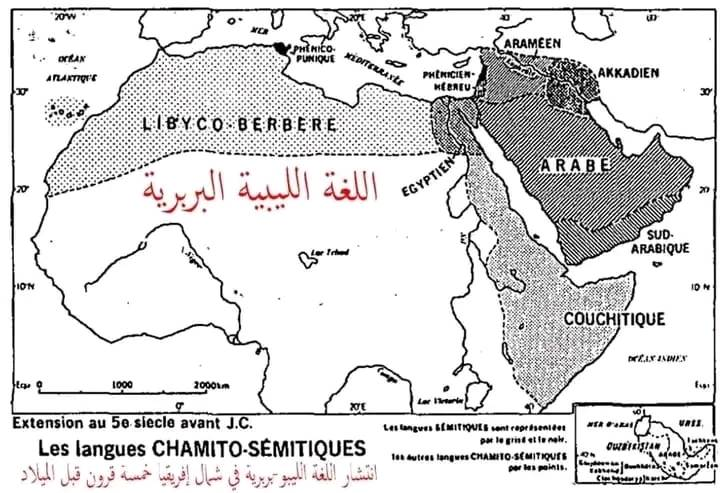A talk by the Australian-British archaeologist Peter Bellwood

In a talk by the Australian-British archaeologist (Peter Bellwood, University of Auckland and the Australian National University) in his book The global prehistory of human migration
About the Berber language on page 340, indicating that the ancient language spread in North Africa is itself an extension of the ancient Libyan language spoken by the Libo, Mashwash, and Tahnu..
Translation ..
The spread of Berber languages
To the Berber branch belong not only the modern Berber languages spoken in North Africa from Senegal and Mauritania to Egypt (Siwa Oasis), but also the language(s) of Libyan-Berber inscriptions documented from the Canary Islands to Libya and dated from the 7th century BC to the 4th century BC, Along with parts of the Canary Islands languages recorded by Spanish and Italian historians in the 14th and 16th centuries AD. The oldest archaeological traces of human settlement in the Canary Islands are known from Tenerife in about 540 BC, including an ancient inscription from Hierro
(Pichler2007.57-59).
Taking into account the Chromite dating of the Proto-Berber disintegration to the 7th century BC (Blažek 2010).

Tifinagh - is the ancient Amazigh script, whose invention dates back to 3000 years BC. Its area of distribution extends from northern Sudan to the Canary Islands, Sicily, Andalusia, and north to the Canary Islands. The Amazigh alphabet was in the early stages of its existence. It consists of 16 silent letters. During the reign, it became the Numidian Berber Kingdom, of which Masinissa was the most prominent king. Then it was added to it at a later time. Consonant letters. It is called Berber. Tidbakine. The ancient Berbers used to write these letters on the walls of caves and rocks. They left us more than a thousand inscriptions on the stone plates. They left a number of memorial inscriptions in Tunisia, Algeria, Mali, Niger and Morocco... Especially what is accompanied by its Latin and Phoenician translations. The researcher Jyrke Markey. Trying hard to explain it. But most of the ancient Berber inscriptions are still waiting for specialists who are required to master the Berber language first. Then one of the dead and living languages, such as Phoenician, Greek, Byzantine, and Latin. In Morocco, there are models of rock inscriptions in Azib Nikis and Yakour in the Great Atlas. The Azrou plate was engraved and the Tiflet plate was engraved. In the areas of Samara there are complete texts written in Tifinagh letters. There are other engravings

Tetouan and Sidi Slimane Museum in Rabat. And the Ain Al-Juma plate in the Casablanca Museum. A group of intellectuals and researchers came up with the creation of sophisticated instruments in Finagh, which were confiscated in the markets. It is worth noting that this script has never ceased to be written in. It is now used on the Internet. This script is still written throughout the land of Tamazgha and is in great demand by the Amazigh who are jealous of their Amazigh language.
Source: websites

